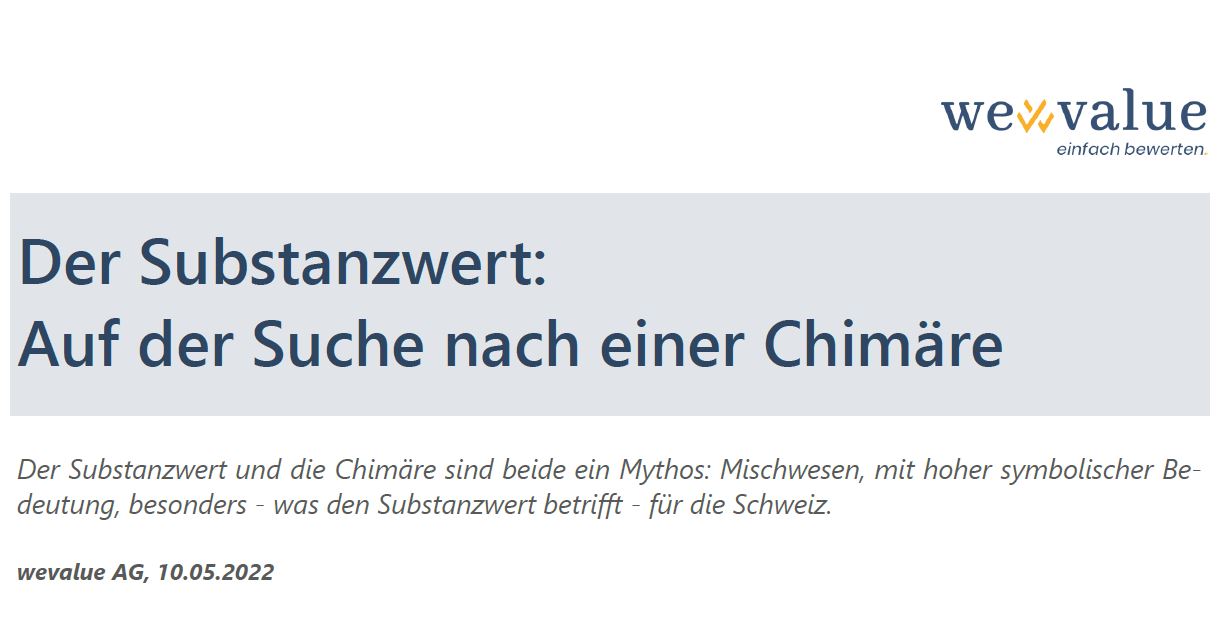The Net Asset Value: In Search of a Chimera

The net asset value and the chimera are both a myth: hybrid creatures, with high symbolic significance, especially – as far as the net asset value is concerned – for Switzerland.
First
As late as 1998, Helbling stated “that a business valuation report in which the net asset value is not determined and commented on must be described as not professional” (Helbling, Unternehmensbewertung und Steuern, 1998, p. 86). Since 2006, the net asset value has also been an integral part of the valuation method laid down in Kreisschreiben 28 (KS 28) for the valuation of securities without market value. This formula value is also considered a tax safe haven in other contexts (e.g. employee shares).
Net asset value equals minimum value?
In this context, we were asked what significance a net asset value above the capitalized earnings value has. Specifically, whether it is permissible to assume this as the minimum value when searching for a market value.
Classification of the net asset value
To do this, the net asset value must first be classified:
- The net assets of a company are relevant to value: What is already available does not have to be procured and saves the investor money. In the sense of these saved expenses, the assets are an integral part of every DCF method (Sieben/Maltry in Peemöller: Praxishandbuch Unternehmensbewertung, 2019, p. 835).
- In mixed methods of earnings and net asset value (practitioner methods), net asset value is included in the value calculation as a separately calculated element. In valuation theory, this can be interpreted as a model for melting excess profits (Moxter, 1983, p. 45 f.). However, the reception in practice is often different. The fact that the net asset value in KS 28 is derived on the basis of the commercial balance sheet adjusted for hidden reserves and deferred taxes is also an inaccurate simplification, but one that is acceptable in mass procedures. It would be less wrong to base it on reconstruction or replacement values, which reflect the “risk of reconstruction”. However, this also remains only an approximate solution. Since essential intangible values are left out, it is at best a partial reconstruction value.
- As a stand-alone procedure, a net asset valuation only makes sense if no added value can be expected from the interaction of the asset parts. This may be the case with an asset management or a holding company. Furthermore, it also applies to companies from which services and no financial surpluses are expected, such as non-profit organizations (public utilities, charitable purposes, etc.). Here, too, reconstruction or replacement costs are applied.
What does that mean now?
To return to the question posed to us: Conceptually, an asset value determined in addition to the capitalized earnings value is always a partial reconstruction value. This is not the minimum value for the company, but the minimum amount for its (partial) reproduction (Moxter, loc. cit., p. 43). Whether a reproduction is worthwhile can only be answered together with the capitalized earnings value: if this is below the net asset value, there is nothing to be said for it. Goodwill or badwill (capitalized earnings value greater or less than net asset value) cannot be derived from this. What matters is the purchase price actually paid (Münstermann, Wert und Bewertung der Unternehmung, 1966, p. 140). The fact that a buyer pays a net asset value that is higher than the capitalized earnings value cannot be economically justified. In this respect, a net asset value based on going-concern values is ruled out as an idea for a minimum market value.

